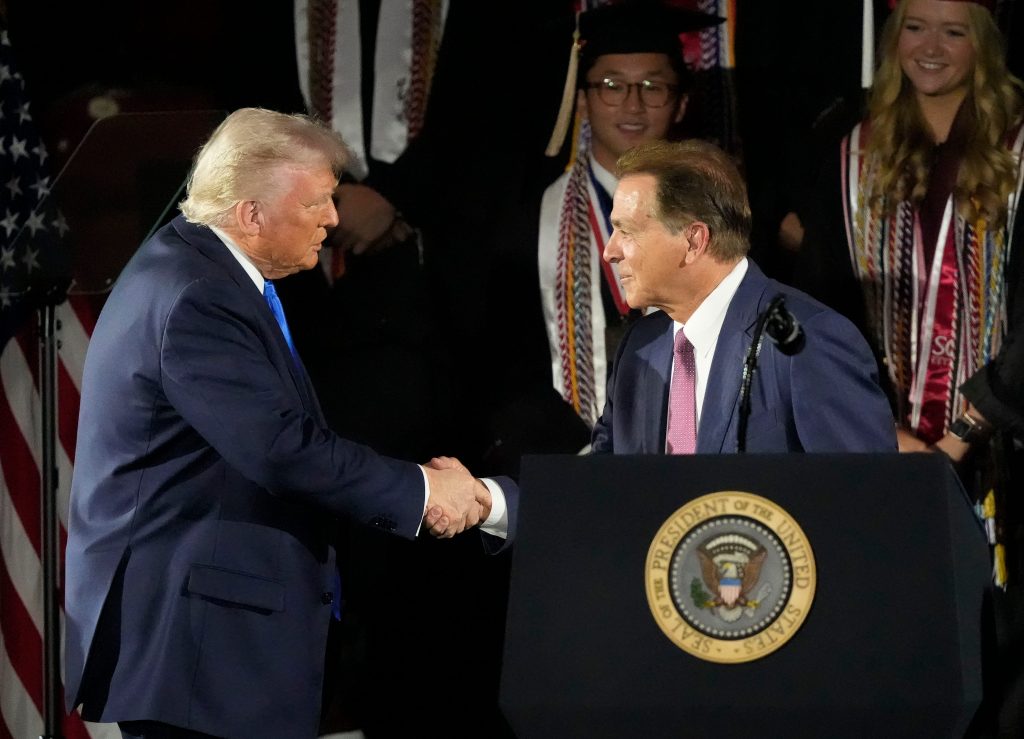The New Era of College Athletics: A Transformative Moment
The landscape of college athletics is rapidly evolving, with new dynamics reshaping how players, institutions, and fans interact. Central to this shift is the introduction of Name, Image, and Likeness (NIL) deals, which allow college athletes to be compensated for their personal brand. However, recent reports suggest that this transformation may be met with governmental oversight. U.S. President Donald Trump has shown interest in establishing a commission to address the implications of NIL policies. What does this mean for the future of college sports, and could it affect player compensation?
Understanding NIL: A Game Changer
Since the legalization of NIL deals, the traditional rules governing college athletics have seen significant changes. Previously, players were prohibited from profiting off their name, image, or likeness while attending college. Now, athletes can engage in sponsorships, social media promotions, and various business endeavors, fundamentally altering the landscape of collegiate sports.
While this newfound freedom has its advantages, it has also led to unintended consequences. The influx of money and opportunities has resulted in a dramatic increase in player movement, as athletes transfer schools more frequently to maximize their earning potential. This phenomenon has raised questions about player stability and program continuity.
The Proposed Commission: What’s on the Agenda?
According to reports, President Trump’s proposed commission would explore multiple facets of college athletics, particularly in light of NIL developments. The committee is expected to comprise college sports stakeholders, including former coaches and administrators. Key areas of focus may include:
-
Transfer Portal Dynamics: The commission could analyze the increasing frequency of player transfers and its impact on team rosters and league competitiveness.
-
Booster Compensation: Unregulated financial support from boosters has become an area of concern. The committee may evaluate how these payments affect recruiting and player retention.
- Title IX Implications: The commission will likely address the application of Title IX in the context of emerging revenue streams in collegiate athletics. Ensuring equitable opportunities for all athletes is a critical aspect of this ongoing discussion.
Reactions to the Proposed Oversight
The proposal for a commission has drawn a mixed response from various stakeholders in the collegiate athletics community. Some view this oversight as necessary to maintain balance and integrity in college sports. They argue that establishing limits on player transfers could help restore some stability to programs and prevent the rampant movement that has characterized the NIL era.
However, critics argue that imposing restrictions undermines the very purpose of NIL legislation. The essence of these deals is to provide athletes the freedom to navigate their careers and capitalize on their talents. Balancing control while still allowing athletes to maximize their potential earnings poses a challenging dilemma.
The Effects of NIL on Player Behavior
The changes brought about by NIL have not only transformed the financial landscape but have also shifted players’ decisions regarding their futures. Notably, there has been a decline in early entrants for the NBA and NFL drafts, indicating that athletes may be opting to stay in college longer, buoyed by the financial opportunities available to them through NIL deals. This trend could lead to longer tenures in college and a more seasoned athlete entering the professional ranks.
Looking Ahead: A New Normal?
As college sports continue to experience profound shifts, the potential establishment of a commission to oversee these changes could signal just the beginning of a larger conversation about the future of collegiate athletics. With the spotlight on player mobility and compensation, institutions, athletes, and fans alike are grappling with the implications of this evolving environment.
At the heart of this discussion is a fundamental question: What does the future hold for college athletics? With both excitement and uncertainty on the horizon, one can only watch as these developments unfold, shaping a new era in sports.


